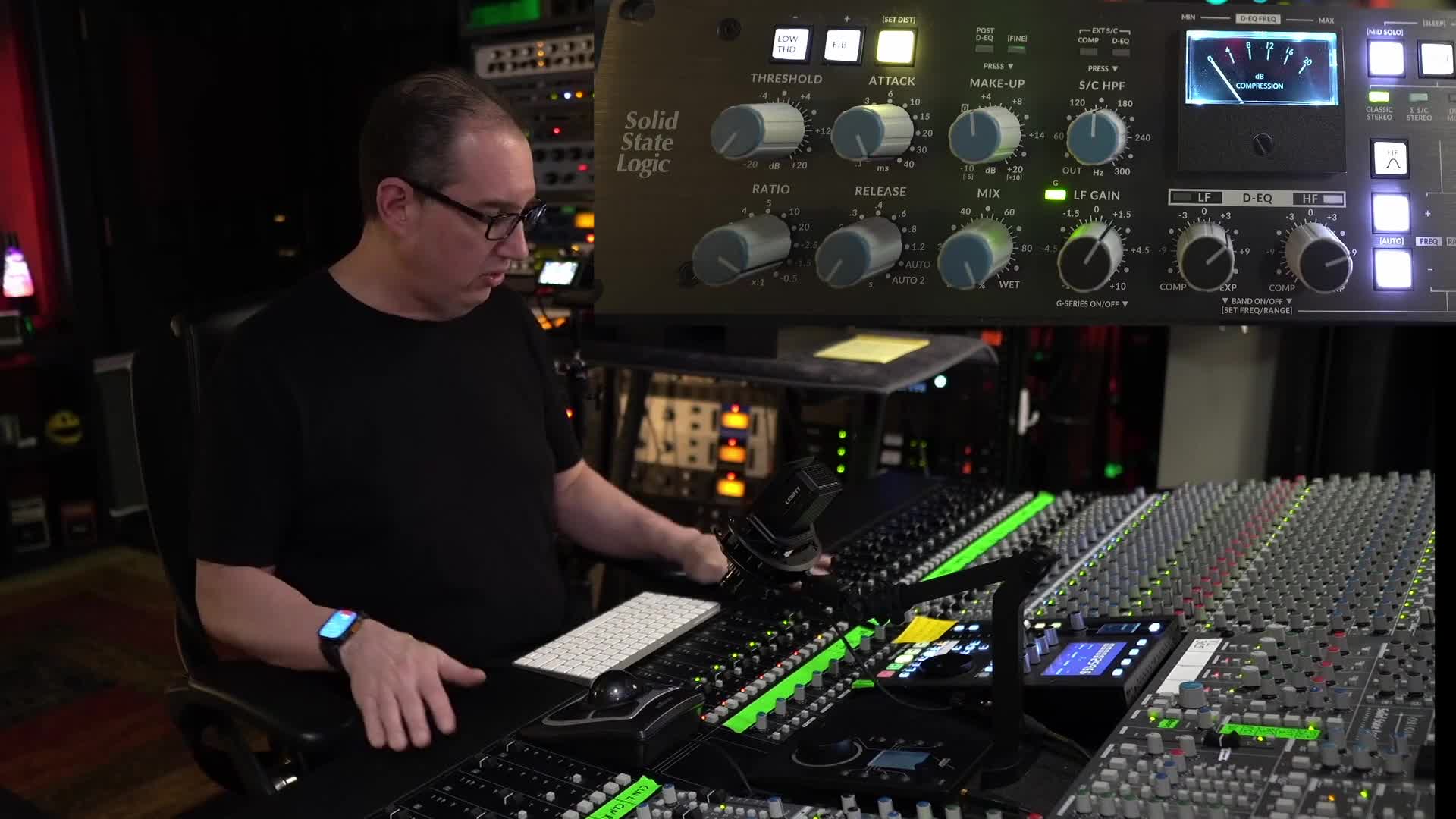Discover the Versatility of the Solid State Logic Bus+ Bus Compressor

Hey everybody, welcome back to the channel! If you're here, then you're probably just like me—a music enthusiast eager to learn more about mixing and mastering. Today, we're diving into the third installment featuring the incredible Solid State Logic Bus+ Bus Compressor. We're going to explore its unique features, focusing on parallel compression for crushing drums and blending them seamlessly with bass, guitar, and other elements.
SSL Bus+ Overview
The SSL Bus+ compressor is not just your average piece of hardware. No, it's got some killer features that set it apart from previous iterations, most notably its negative ratio options. These are a game-changer when it comes to achieving a dynamic, pumping effect in your mixes. If you haven't checked out the previous episodes, I highly recommend doing so. They'll be linked below and include unboxing, classic setups, and dynamic EQ features.
Learn about dynamic EQ features
Parallel Compression: A New Approach
So what's on the agenda today? We're taking the SSL Bus+ off the master bus and diving deep into parallel compression for drums. This entails routing kick, snare, and overheads to a secondary bus where we'll unleash the magic of parallel compression.
The Basics of Parallel Compression
Parallel compression, often referred to as "New York compression," is where you mix a heavily compressed signal with the uncompressed original. The result? A punchy, dynamic sound that's perfect for cutting through complex mixes.
Setting Up for Success
Let's get started by engaging our negative ratios—the pièce de résistance of the Bus+. These negative ratios (negative 0.5, 1.5, and 2.5) allow us to achieve a unique pumping effect.
Here’s how the setup looks on my console: a drum kit with kick, snare, hats, toms, and overheads, all lightly EQ'd with no additional hardware processing. They route to a drum bus for compression, providing a "dry" drum sound.
Listening to the Drums: Dry vs. Processed
Initially, the drums sound unprocessed as we loop through them. This is our baseline. Now, we start engaging the compressor and showcasing different settings—negative ratios, attack and release times, and more.
Initial Drum Setup:Kick, Snare, OverheadsRouting to secondary bus with Bus+Settings: -2.5 ratio, 150 highpass, dynamic EQ offExploring Negative Ratios
Once we engage the Bus+, you'll notice a pumping, breathing effect at about 10-12 decibels of compression. We're already tapping into the 4K mode but keeping feedback mode off, allowing pure sonic magic.
Cycling Through Ratios
We started at -2.5 for maximum effect, but let's hear the difference as we adjust to -1.5 and -0.5 ratios. Just cycling through these, you can hear how your mix morphs dynamically.
Blending Processed and Unprocessed Drums
So now you've got this heavy, squashy sound. The trick? Blending back in the original drums. By slowly bringing up the Bus+ track in the mix, you find a newfound aggressiveness and crunch, particularly on the snare.
Bringing in the Rhythm Section
To push this demo further, we'll introduce a bass and a couple of rhythm guitars. This sparse setup allows us to showcase how these compressed drums sit within a larger context.
Settings for Bass & Guitars:Default compressor settingsRegular drum track blended with Bus+ trackDynamics in Context
Incorporating the SSL Bus+ enhances not just the drums but the overall mix. It's apparent when you toggle the effect in and out—the drums have more presence, more impact, and more life.
In Conclusion: The Most Versatile Compressor
The SSL Bus+ doesn't just sit on a master bus; it's equally adept as a drum bus compressor. With its myriad features, this hardware gives unparalleled control, making it, in my opinion, the most versatile stereo compressor available.
Final Thoughts
"If you're in the market for probably the most versatile stereo bus compressor, I don't know if there's anything better or more versatile than this."
Learning to wield this technology requires patience and dedication—as well as a thorough review of the user manual. But once mastered, it will revolutionize your mixing game.
Links in the description box below! If you're interested in grabbing the Bus+ for yourself, check out my Sweetwater affiliate link: SSL Bus+ Purchase
Join the Conversation
Got a Bus+ yourself? How are you using it? If you have suggestions or want more content around this amazing piece of hardware, leave your comments below and let us know. And if you’ve got any questions, feel free to ask. My friends over at Solid State Logic will be reading the comments too—so let’s keep the conversation going!
Until next time, this is Dave with MixingMusicAnalog.com, signing off. See you in the next video, folks!



